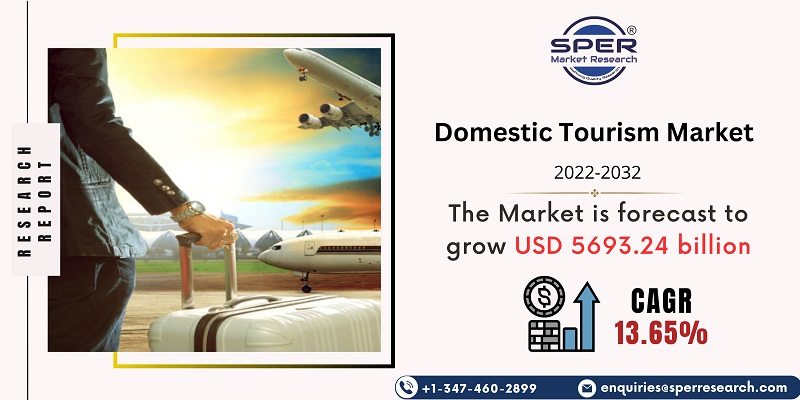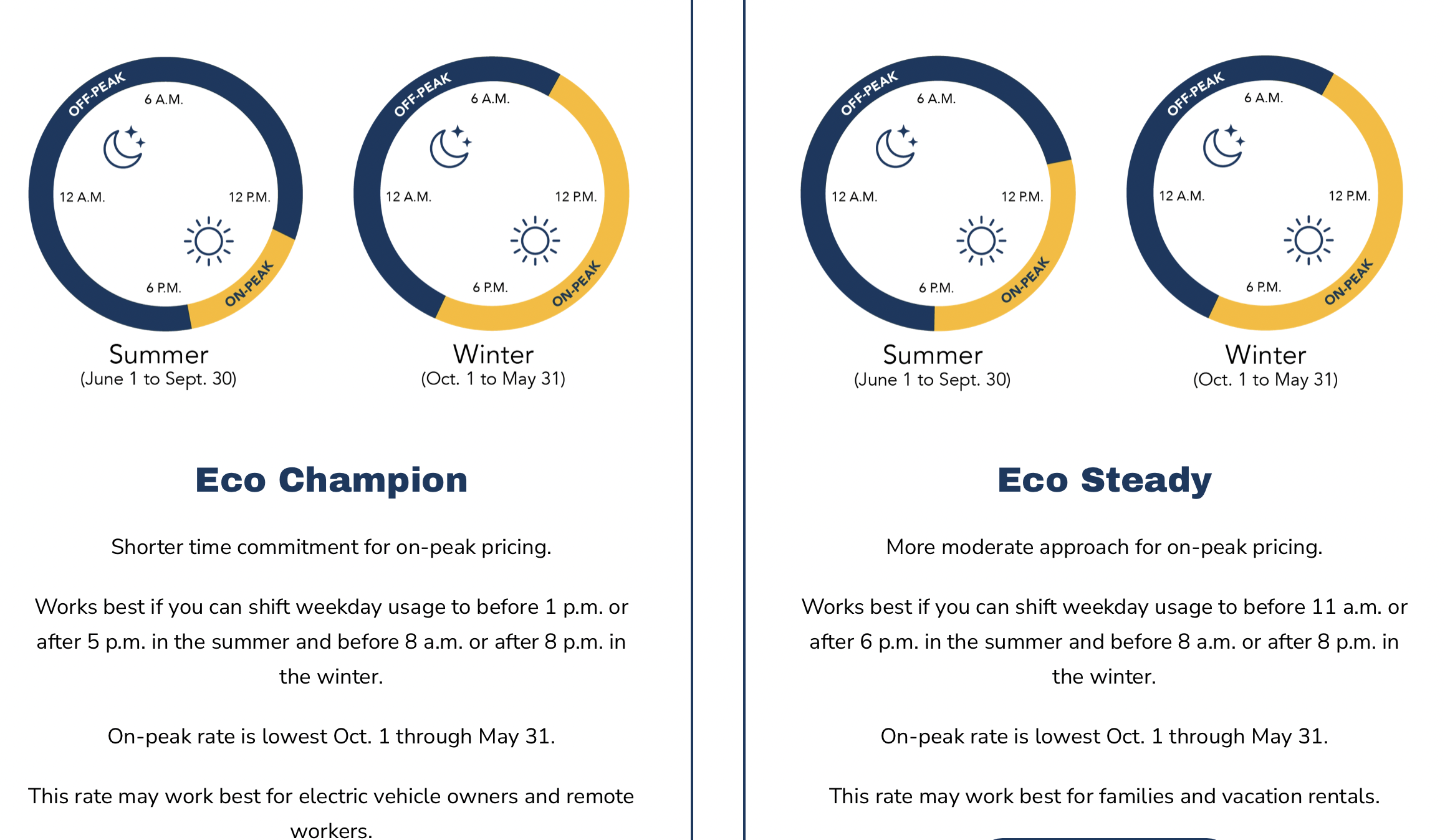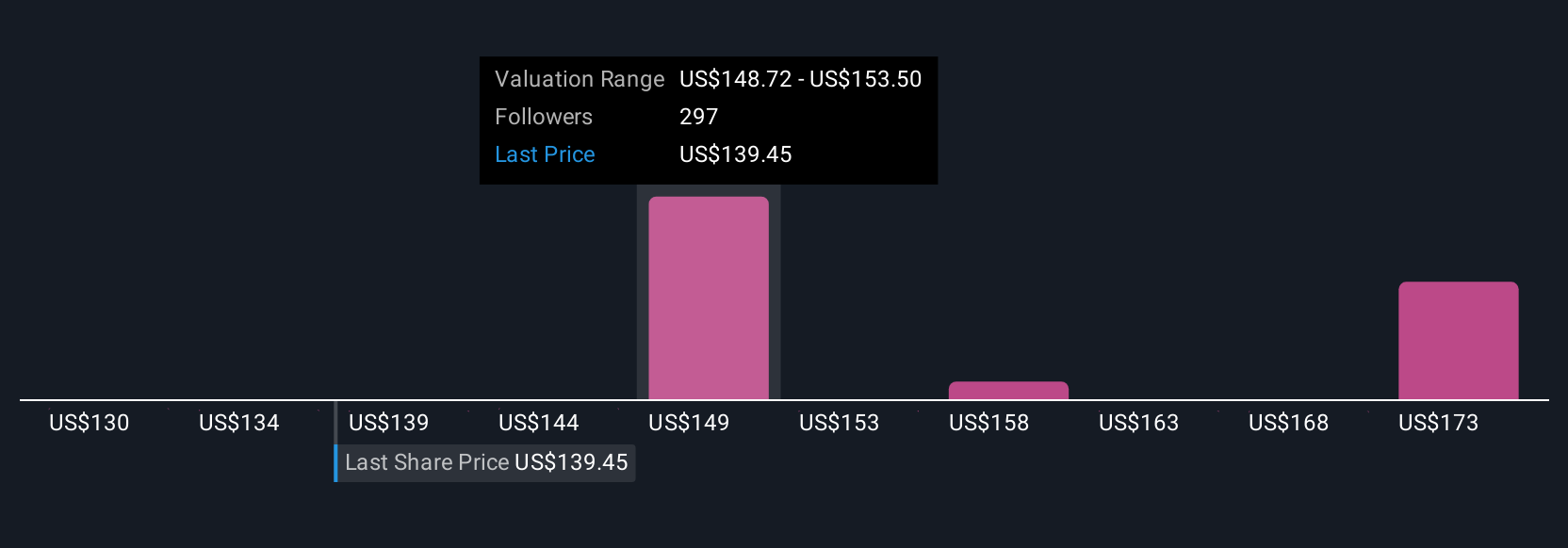Responsible Tourism Market Size, Share | CAGR of 6.3%. – Market.us

Report Overview: The Global Responsible Tourism Market and its Alignment with Sustainable Development Goals
The Global Responsible Tourism Market is projected to expand from USD 266.3 Billion in 2024 to USD 490.6 Billion by 2034, demonstrating a Compound Annual Growth Rate (CAGR) of 6.3%. This growth reflects a fundamental shift in the travel industry towards practices that are environmentally sustainable, socially equitable, and economically viable, directly aligning with the United Nations’ 2030 Agenda for Sustainable Development.
Responsible tourism is defined by its commitment to minimizing the negative impacts of travel while maximizing benefits for local communities, cultures, and ecosystems. This approach is integral to achieving several Sustainable Development Goals (SDGs), including SDG 8 (Decent Work and Economic Growth), SDG 11 (Sustainable Cities and Communities), SDG 12 (Responsible Consumption and Production), and SDG 13 (Climate Action). As global awareness of climate change and social inequality intensifies, travelers and governments are increasingly prioritizing ethical travel, making responsible tourism a central pillar of the future global economy.
Governmental support through policies and investments is crucial for this market’s expansion. By implementing regulations on waste management, carbon emissions, and environmental preservation, nations are creating a framework that encourages sustainable tourism development, fostering partnerships for the goals (SDG 17).
Consumer behavior is a primary driver of this market. A 2023 report from Booking.com indicated that 76% of travelers intend to travel more sustainably. Furthermore, a YouGov survey found that 53% of global consumers are willing to pay more for such options. This demand for sustainable choices propels the market forward, although a value-action gap persists, with a TIME study noting that while 81% of consumers aspire to be more sustainable, only 29% actively alter their behavior. Closing this gap represents a significant opportunity for the sector.
Key Market Highlights and SDG Alignment
- Market Projection: The market is forecast to reach USD 490.6 Billion by 2034, indicating strong economic potential that can be harnessed to support SDG 8.
- Dominant Type: Ecological Tourism led with a 34.2% share in 2024, directly contributing to SDG 14 (Life Below Water) and SDG 15 (Life on Land) through conservation-focused activities.
- Consumer Orientation: Women constituted 56.7% of the market, highlighting their role as key decision-makers in sustainable consumption and advancing SDG 5 (Gender Equality).
- Leading Tourism Type: Domestic tourism held a 59.5% share, promoting lower-carbon travel in line with SDG 13 and supporting local economies as per SDG 11.
- Prominent Tourist Type: Independent Travelers accounted for 44.1% of the market, often choosing to support local businesses and foster authentic cultural exchange, which aligns with SDG 8 and SDG 10 (Reduced Inequalities).
- Regional Leadership: The Asia Pacific region dominated with a 47.2% market share, valued at USD 125.6 Billion, driven by initiatives that promote sustainable economic growth and responsible production (SDG 8 and SDG 12).
Market Segmentation Analysis
Analysis by Type
In 2024, Ecological Tourism held a commanding market share of 34.2%. This segment’s leadership is a direct result of heightened global consciousness regarding environmental preservation. Ecological and Green Tourism models are fundamentally designed to support the conservation targets of SDG 14 (Life Below Water) and SDG 15 (Life on Land) by promoting low-impact travel in natural areas. Concurrently, Community Tourism is gaining traction by focusing on empowering local populations, which directly contributes to SDG 1 (No Poverty) and SDG 8 (Decent Work and Economic Growth) by ensuring that tourism revenues benefit host communities.
Analysis by Consumer Orientation
Women represented a dominant 56.7% share of the market in 2024. This trend underscores the influential role of women in driving the shift towards more ethical and sustainable consumption patterns. Their preference for travel that delivers positive social and environmental outcomes is a powerful force for change, advancing the principles of SDG 5 (Gender Equality) by positioning women as key agents in the sustainable economy.
Analysis by Tourism Type
Domestic tourism captured 59.5% of the market in 2024. This preference is driven by a desire to reduce carbon footprints associated with international air travel, directly addressing SDG 13 (Climate Action). Furthermore, domestic travel strengthens local economies and fosters appreciation for national cultural and natural heritage, contributing to the resilience and sustainability of communities as outlined in SDG 11.
Analysis by Tourist Type
Independent Travelers led the market with a 44.1% share. This demographic typically seeks flexible and authentic experiences, often prioritizing direct engagement with local businesses over conventional package tours. This behavior supports local entrepreneurship and ensures a more equitable distribution of economic benefits, aligning with the objectives of SDG 8 and SDG 10.
Analysis by Application
The Group segment held a leading share of 34.2% in 2024. While seemingly conventional, organized group travel provides a significant opportunity to implement and scale sustainable practices efficiently. Tour operators can enforce responsible consumption guidelines, manage waste, and select certified partners, thereby contributing collectively to SDG 12 (Responsible Consumption and Production).
Market Dynamics: Drivers, Restraints, and Opportunities
Market Drivers
The primary driver for the responsible tourism market is the growing consumer awareness of travel’s environmental and social footprint. This shift in mindset is a manifestation of global progress towards SDG 12, where consumers increasingly demand transparency and sustainability from service providers. This pressure compels businesses to adopt eco-friendly operations, reduce their carbon footprint, and contribute positively to host destinations.
Market Restraints
A significant restraint is the limited availability of adequate infrastructure in many destinations. The lack of green-certified hotels, sustainable transport, and effective waste management systems poses a barrier to growth. Overcoming this challenge requires substantial investment in sustainable infrastructure, a key target of SDG 9 (Industry, Innovation, and Infrastructure), to enable destinations to meet the rising demand for responsible travel.
Growth Opportunities
The development and adoption of green tourism certification programs present a major growth opportunity. These certifications provide credible, standardized benchmarks for sustainability, helping consumers make informed choices and driving the industry towards the goals of SDG 12. Expansion into emerging regions also offers significant potential, allowing these destinations to build their tourism economies on sustainable foundations that support SDG 8 and SDG 1.
Emerging Trends
Digital platforms are becoming instrumental in promoting sustainable travel options, functioning as a key enabler for SDG 9 and SDG 17 (Partnerships for the Goals). These platforms connect conscious travelers with certified sustainable operators. Another prominent trend is the rise of ethical wildlife tourism, which directly supports the conservation of biodiversity as mandated by SDG 15 (Life on Land) by ensuring that tourism activities contribute to the protection of animals and their habitats.
Regional Analysis and Contribution to Global Goals
Asia Pacific
The Asia Pacific region leads the market with a 47.2% share, valued at USD 125.6 Billion. This dominance is fueled by a combination of government policies promoting sustainable practices and a growing middle class that is increasingly aware of environmental issues. The region’s focus on developing tourism that creates jobs and preserves culture is a significant contribution to SDG 8 and SDG 11.
North America
In North America, a strong consumer preference for sustainable experiences drives the market. The adoption of eco-tourism and green travel practices, supported by both government and non-profit organizations, contributes to the achievement of environmental goals such as SDG 13, SDG 14, and SDG 15.
Europe
As an early adopter, Europe has a mature responsible tourism market underpinned by robust regulations and strong public awareness. The region’s commitment to the green transition and circular economy principles makes it a leader in advancing SDG 12 and SDG 13 within the tourism sector.
Middle East and Africa
This region is increasingly investing in sustainable tourism infrastructure, with a focus on community-based and eco-tourism models. These initiatives are vital for economic diversification, poverty alleviation (SDG 1), and the preservation of unique natural and cultural assets, aligning with SDG 8 and SDG 15.
Latin America
Latin America, particularly nations like Costa Rica, is renowned for its leadership in eco-tourism. The region’s focus on leveraging its immense biodiversity for sustainable travel directly supports the conservation objectives of SDG 14 and SDG 15, providing a global model for how tourism can coexist with and support nature.
Competitive Landscape and Corporate Responsibility
Key Responsible Tourism Company Insights
Leading companies in this sector integrate the SDGs into their core business strategies.
- Intrepid Travel pioneers ethical travel through small group tours that maximize local community engagement and minimize environmental impact, directly supporting SDG 8 and SDG 12.
- Much Better Adventures focuses on adventure tourism with a strong commitment to sustainability and carbon reduction, contributing to SDG 13.
- Undiscovered Mountains promotes tourism in lesser-known regions, helping distribute economic benefits more equitably and reducing pressure on over-touristed areas, in line with SDG 10 and SDG 11.
- Adventure Alternative emphasizes cultural preservation and environmental sustainability, ensuring its operations protect heritage and ecosystems as per SDG 11.4 and SDG 15.
Top Key Players in the Market
- Intrepid Travel
- Much Better Adventures
- Undiscovered Mountains
- Adventure Alternative
- Global Himalayan Expedition
- TUI Group
- The Travel Corporation (TTC)
- Wilderness Safaris
Recent Developments
- November 2024: FairMoove acquired We Go GreenR and FiG, strengthening its portfolio of sustainable initiatives and reinforcing its commitment to green travel principles aligned with SDG 12 and SDG 13.
- June 2025: Intrepid Travel expanded its eco-friendly hospitality offerings by acquiring properties in Tasmania and Marrakech, a strategic move to deepen its impact on sustainable accommodation and local economies (SDG 8).
1. Which SDGs are addressed or connected to the issues highlighted in the article?
- SDG 5: Gender Equality: The article highlights the significant role of women in the responsible tourism market, stating they “accounted for 56.7% of the market in 2024” and “play a pivotal role in making travel decisions,” connecting to the economic empowerment and decision-making influence of women.
- SDG 8: Decent Work and Economic Growth: The article focuses on the economic aspects of responsible tourism, including its market size (USD 266.3 Billion in 2024), growth rate (CAGR of 6.3%), and its role in supporting “local economies” and “local businesses.” This directly relates to promoting sustained, inclusive, and sustainable economic growth.
- SDG 11: Sustainable Cities and Communities: The article mentions the importance of “cultural preservation,” “community involvement,” and protecting “local cultures and natural resources,” which aligns with the goal of making human settlements inclusive, safe, resilient, and sustainable by safeguarding cultural and natural heritage.
- SDG 12: Responsible Consumption and Production: This is a central theme. The article discusses the shift in “consumer behavior” towards sustainable travel, the demand for “eco-friendly travel experiences,” and the development of “Green tourism certification programs.” It directly addresses the need to ensure sustainable consumption and production patterns.
- SDG 13: Climate Action: The article addresses climate action by emphasizing the desire to “reduce carbon footprints” through choices like domestic tourism and low-carbon transport. It highlights that “consumer awareness about the environmental impact of travel” is a key driver for the market.
- SDG 15: Life on Land: The focus on “Ecological Tourism,” “environmental conservation,” “preserving biodiversity,” and the rise of “ethical wildlife tourism” directly connects to protecting, restoring, and promoting the sustainable use of terrestrial ecosystems.
- SDG 17: Partnerships for the Goals: The article points to the importance of collaboration, mentioning “government investments and regulations,” “partnerships between travel agencies and environmental NGOs,” and acquisitions by companies to strengthen their sustainability commitments.
2. What specific targets under those SDGs can be identified based on the article’s content?
-
SDG 5: Gender Equality
- Target 5.5: Ensure women’s full and effective participation and equal opportunities for leadership at all levels of decision-making in political, economic and public life. The article supports this by showing women’s significant economic influence, noting they “held a dominant market position with 56.7% share in 2024” and are key decision-makers in the growing responsible tourism sector.
-
SDG 8: Decent Work and Economic Growth
- Target 8.9: By 2030, devise and implement policies to promote sustainable tourism that creates jobs and promotes local culture and products. The article directly reflects this target by discussing how responsible tourism supports “local economies,” “local businesses,” and “community involvement,” and how governments are “implementing policies and incentives to encourage eco-friendly tourism development.”
-
SDG 11: Sustainable Cities and Communities
- Target 11.4: Strengthen efforts to protect and safeguard the world’s cultural and natural heritage. The article aligns with this by highlighting that responsible tourism focuses on “cultural preservation,” “preserving local cultures and natural resources,” and promoting “ethical wildlife tourism.”
-
SDG 12: Responsible Consumption and Production
- Target 12.8: By 2030, ensure that people everywhere have the relevant information and awareness for sustainable development and lifestyles in harmony with nature. The article shows progress towards this target by citing “growing consumer awareness about environmental impact,” the use of “digital platforms for promoting sustainable travel,” and survey data showing “76% of travelers expressed a desire to embrace sustainable travel.”
- Target 12.b: Develop and implement tools to monitor sustainable development impacts for sustainable tourism. The article mentions the “Development of Green Tourism Certification Programs” which serve as a tool for consumers to identify sustainable options and for the industry to monitor its practices.
-
SDG 13: Climate Action
- Target 13.3: Improve education, awareness-raising and human and institutional capacity on climate change mitigation, adaptation, impact reduction and early warning. The article points to this through the “rise in consumer awareness about the environmental impact of travel” and the preference for options that “reduce carbon footprints,” such as domestic tourism and “low-carbon transport.”
-
SDG 15: Life on Land
- Target 15.7: Take urgent action to end poaching and trafficking of protected species of flora and fauna. The article implies a connection to this target through the “rising demand for ethical wildlife tourism,” which inherently opposes exploitative practices.
-
SDG 17: Partnerships for the Goals
- Target 17.17: Encourage and promote effective public, public-private and civil society partnerships. The article provides examples of such partnerships, including “government investments and regulations,” “partnerships between travel agencies and environmental NGOs,” and corporate acquisitions like FairMoove acquiring We Go GreenR to enhance its sustainability portfolio.
3. Are there any indicators mentioned or implied in the article that can be used to measure progress towards the identified targets?
- Market Size and Growth Rate: The article provides specific financial data, such as the market size growing from “USD 266.3 Billion in 2024” to “USD 490.6 Billion by 2034” at a “CAGR of 6.3%.” This serves as a direct indicator for Target 8.9, measuring the economic scale of sustainable tourism.
- Consumer Demand and Willingness to Pay: Statistics from surveys are mentioned, such as “76% of travelers expressed a desire to embrace sustainable travel” and “53% of global consumers are willing to pay more for sustainable travel options.” These figures are indicators for Target 12.8, measuring consumer awareness and demand.
- Market Share by Segment: The article provides detailed market share percentages that can be used as indicators. For example, “Women accounted for 56.7% of the market” (Indicator for Target 5.5), “Ecological Tourism held… 34.2% share” (Indicator for Targets 13.3 and 15.7), and “Domestic tourism captured 59.5% of the market” (Indicator for Target 13.3, as it implies reduced carbon footprints).
- Prevalence of Certification Programs: The mention of the “Development of Green Tourism Certification Programs” implies that the number of certified businesses and the adoption rate of these programs can be used as an indicator to measure the implementation of monitoring tools under Target 12.b.
- Government and Corporate Actions: The article mentions “government investments and regulations” and “partnerships between travel agencies and environmental NGOs.” The number and scope of these policies and partnerships can serve as qualitative indicators for progress towards Targets 8.9 and 17.17.
- Value-Action Gap Data: The statistic that “81% of consumers want to act more sustainably, but only 29% have found ways to change their behavior” is a critical indicator. It measures the gap between awareness (Target 12.8) and actual sustainable consumption, highlighting a key challenge.
4. Table of SDGs, Targets, and Indicators
| SDGs | Targets | Indicators Identified in the Article |
|---|---|---|
| SDG 5: Gender Equality | 5.5: Ensure women’s full and effective participation and equal opportunities for leadership… in economic… life. | Percentage of the responsible tourism market held by women (56.7% in 2024). |
| SDG 8: Decent Work and Economic Growth | 8.9: Devise and implement policies to promote sustainable tourism that creates jobs and promotes local culture and products. | Market size (USD 266.3 Billion) and growth rate (CAGR of 6.3%); Mention of government policies and incentives; Support for local economies. |
| SDG 11: Sustainable Cities and Communities | 11.4: Strengthen efforts to protect and safeguard the world’s cultural and natural heritage. | Focus on “cultural preservation,” “community-focused travel,” and preserving “local cultures and natural resources.” |
| SDG 12: Responsible Consumption and Production | 12.8: Ensure that people everywhere have the relevant information and awareness for sustainable development.
12.b: Develop and implement tools to monitor sustainable development impacts for sustainable tourism. |
Percentage of travelers desiring sustainable travel (76%); Percentage willing to pay more (53%); Development of “Green Tourism Certification Programs”; Use of digital platforms to promote sustainable options. |
| SDG 13: Climate Action | 13.3: Improve education, awareness-raising and human and institutional capacity on climate change mitigation. | Consumer awareness of environmental impact; Demand for “low-carbon transport”; Market share of domestic tourism (59.5%) as a lower-carbon option. |
| SDG 15: Life on Land | 15.7: Take urgent action to end poaching and trafficking of protected species. | Market share of Ecological Tourism (34.2%); Rising demand for “ethical wildlife tourism.” |
| SDG 17: Partnerships for the Goals | 17.17: Encourage and promote effective public, public-private and civil society partnerships. | Mention of “partnerships between travel agencies and environmental NGOs”; Government investments and regulations; Corporate acquisitions to enhance sustainability. |
Source: market.us

What is Your Reaction?
 Like
0
Like
0
 Dislike
0
Dislike
0
 Love
0
Love
0
 Funny
0
Funny
0
 Angry
0
Angry
0
 Sad
0
Sad
0
 Wow
0
Wow
0


































































![Lancaster homeowner’s energy-efficient renovation sparks clash over historic preservation [Lancaster Watchdog] – LancasterOnline](https://bloximages.newyork1.vip.townnews.com/lancasteronline.com/content/tncms/assets/v3/editorial/9/ed/9ed03d32-c902-44d2-a461-78ad888eec38/69050b156baeb.image.png?resize=150,75#)









